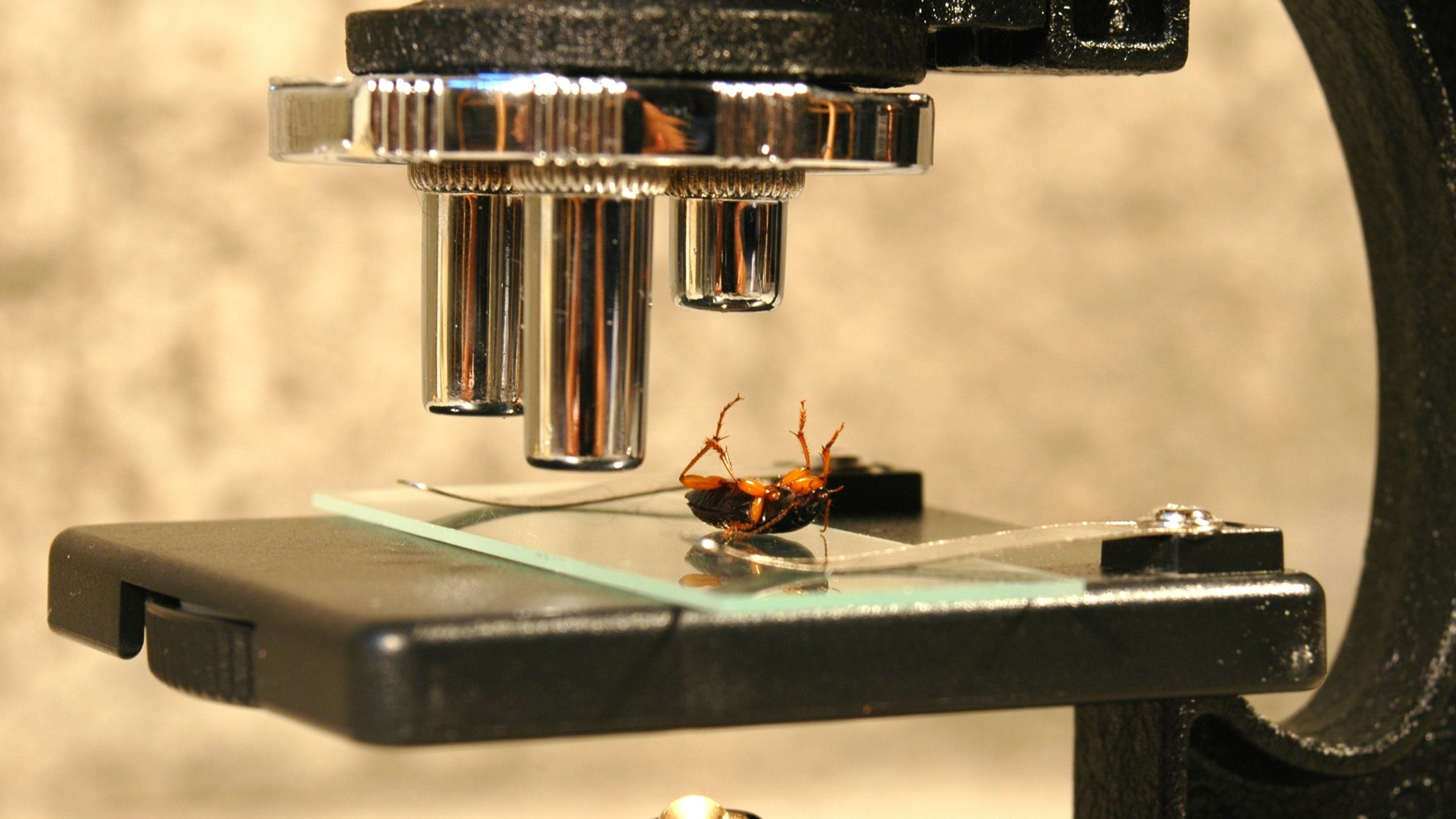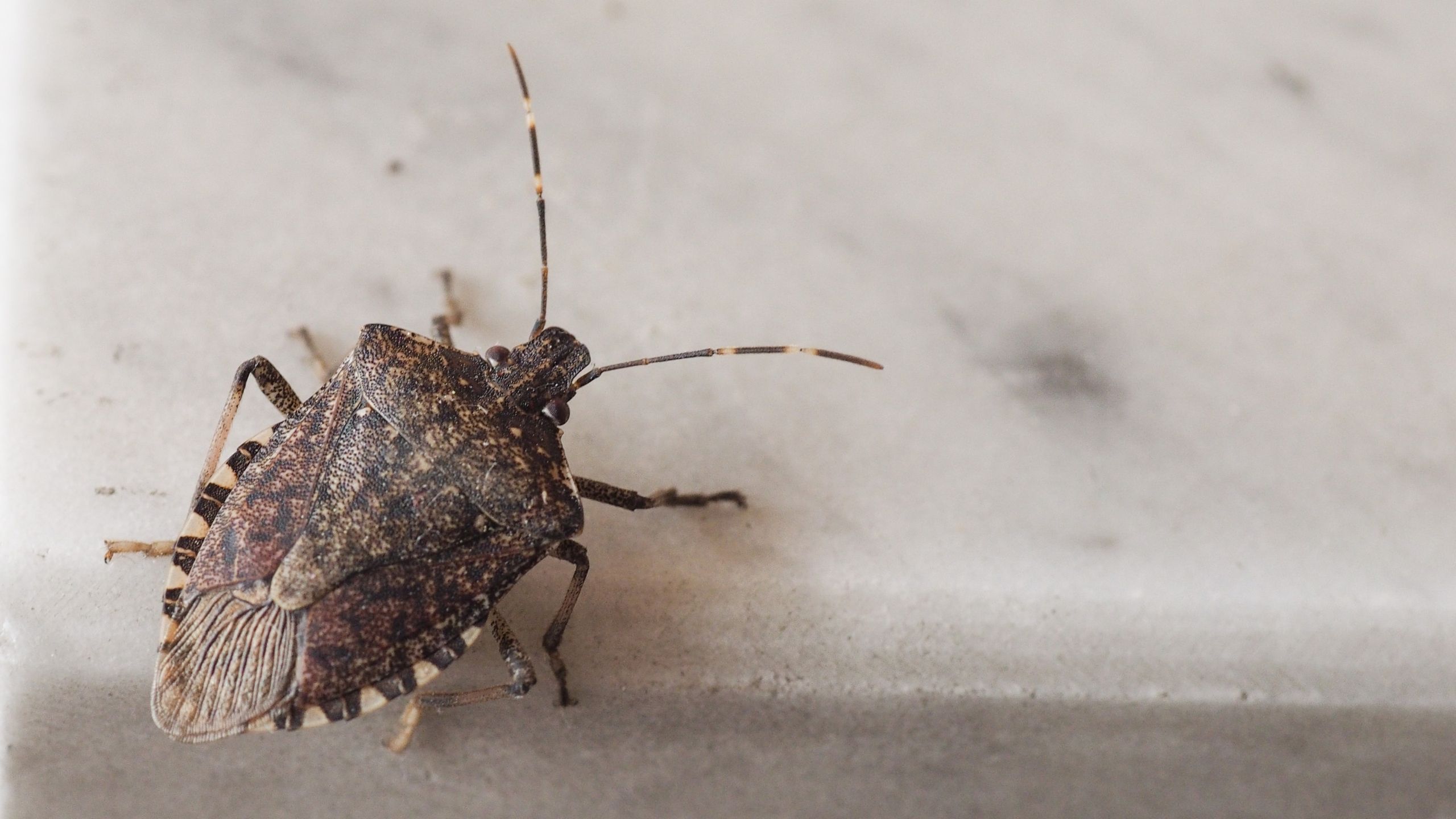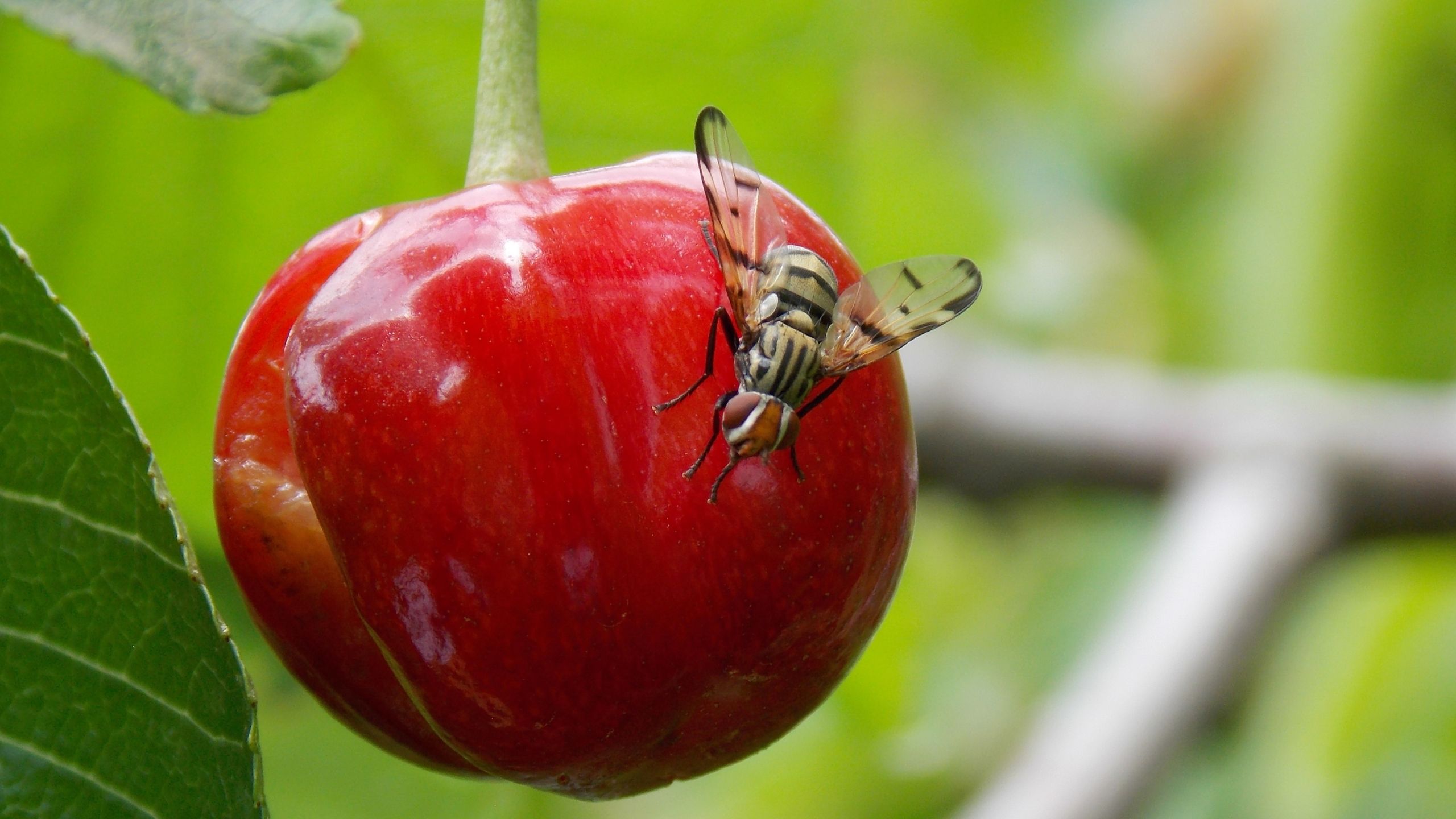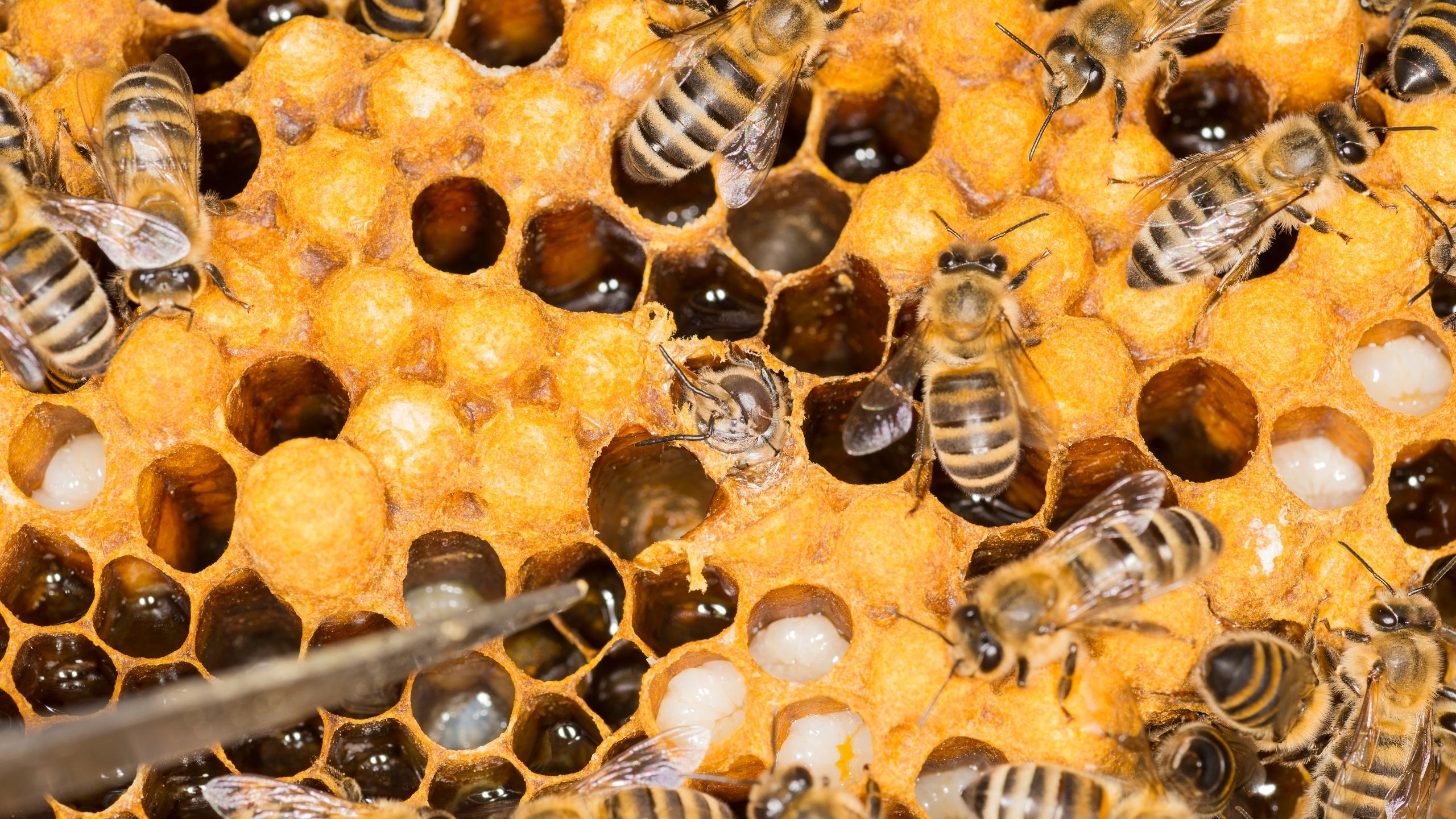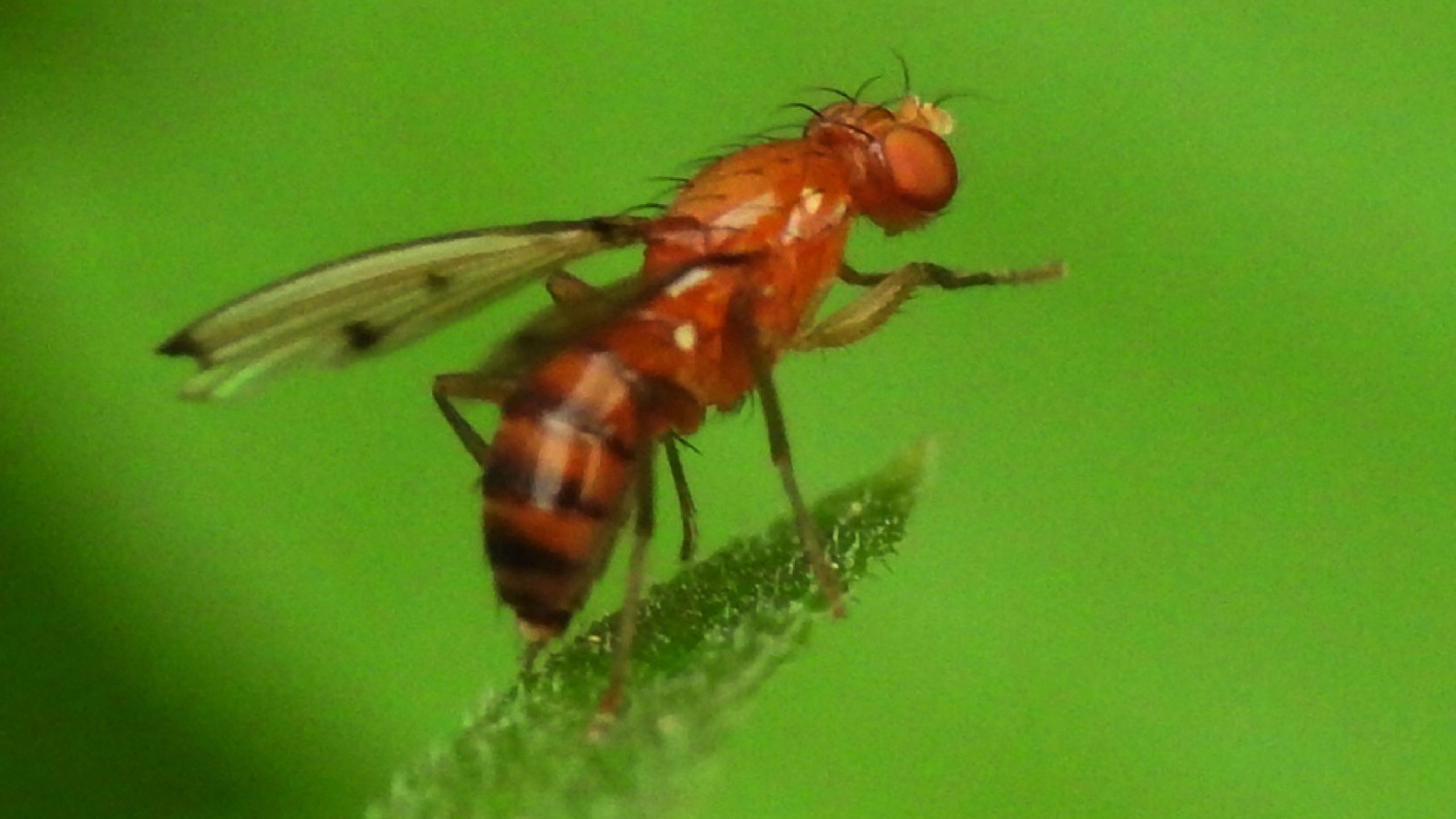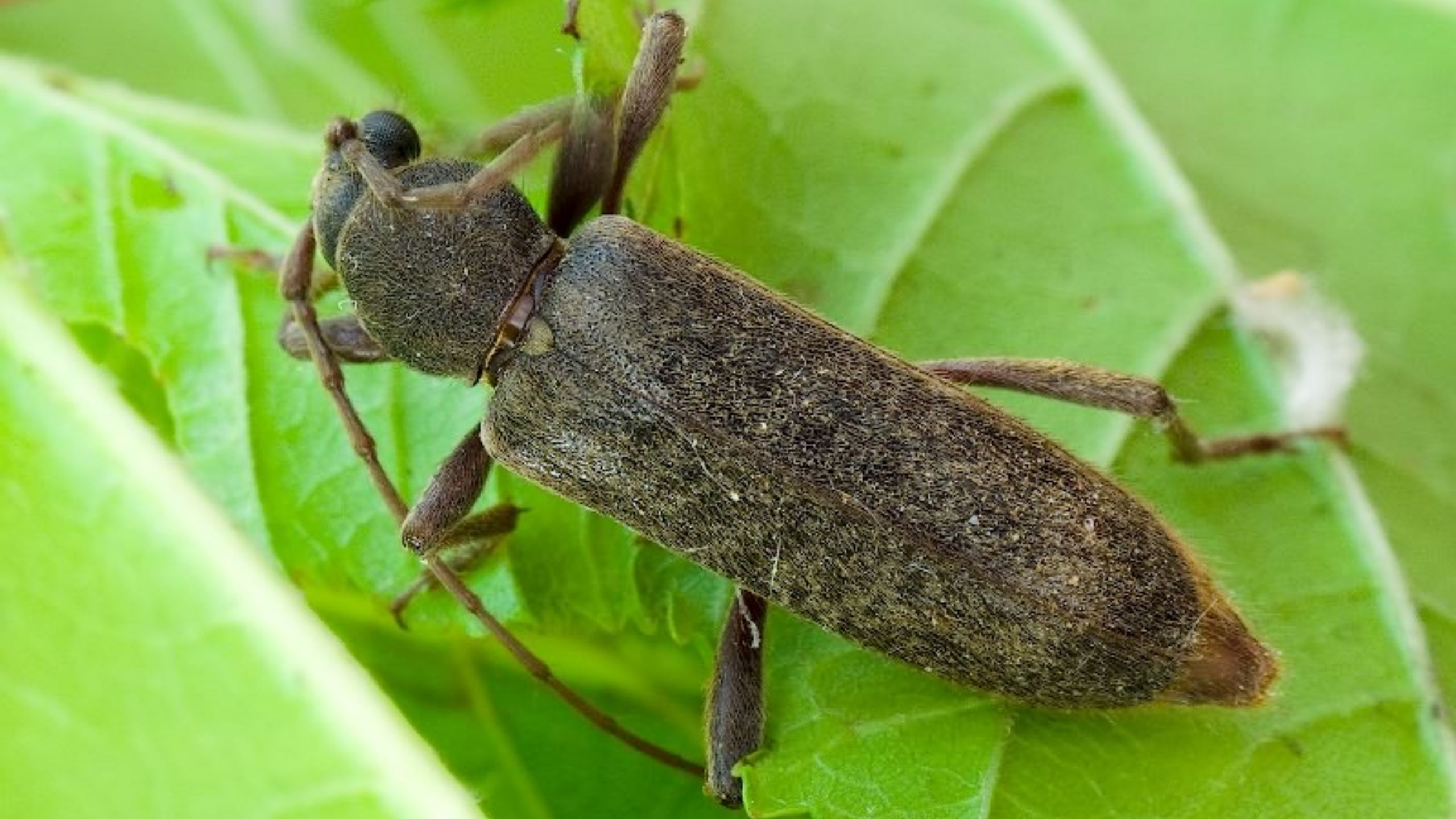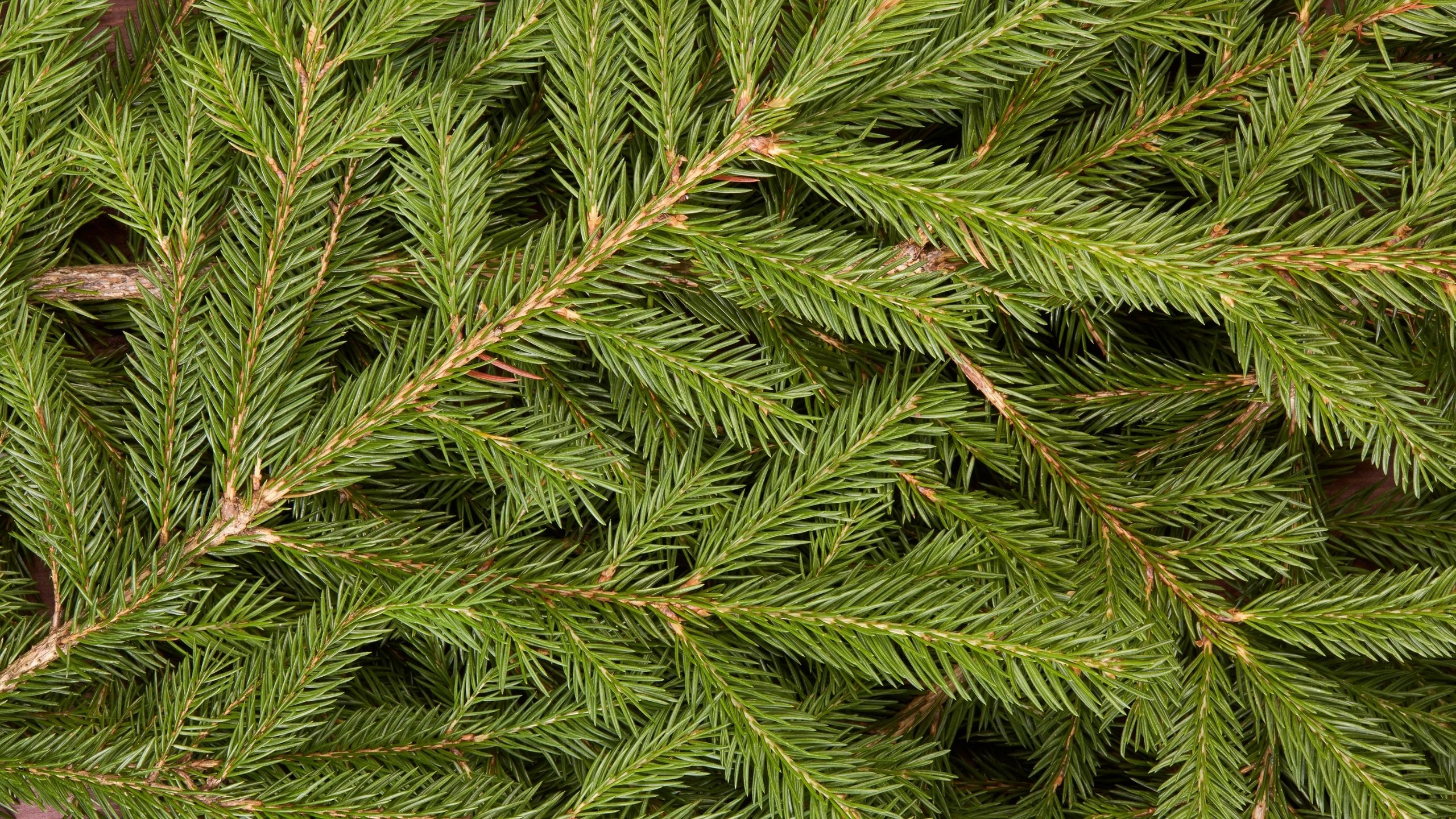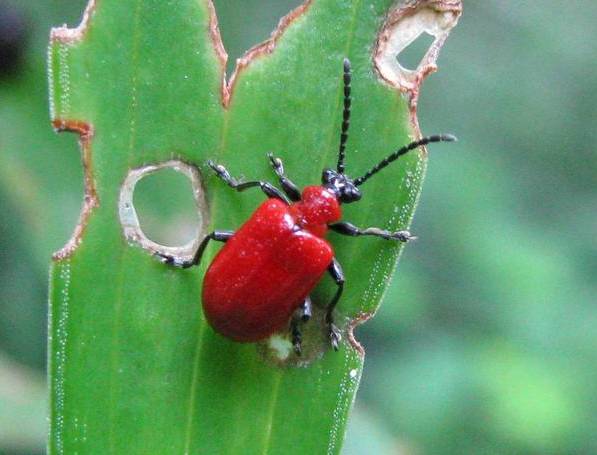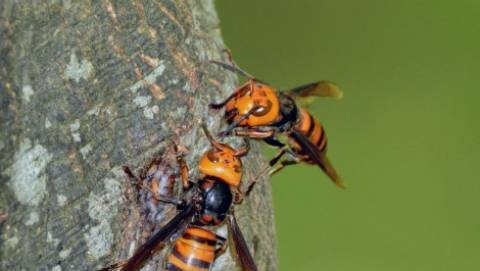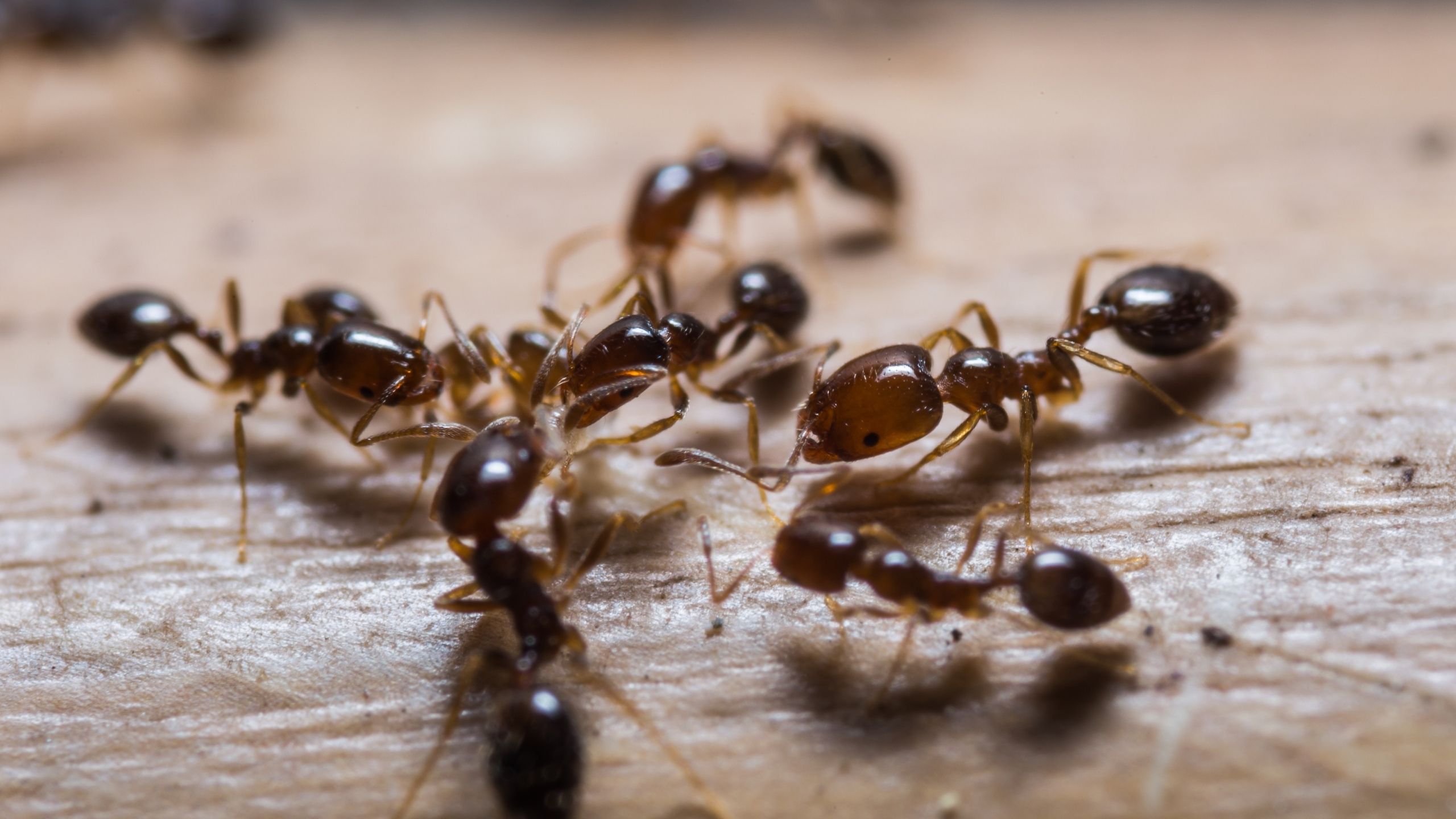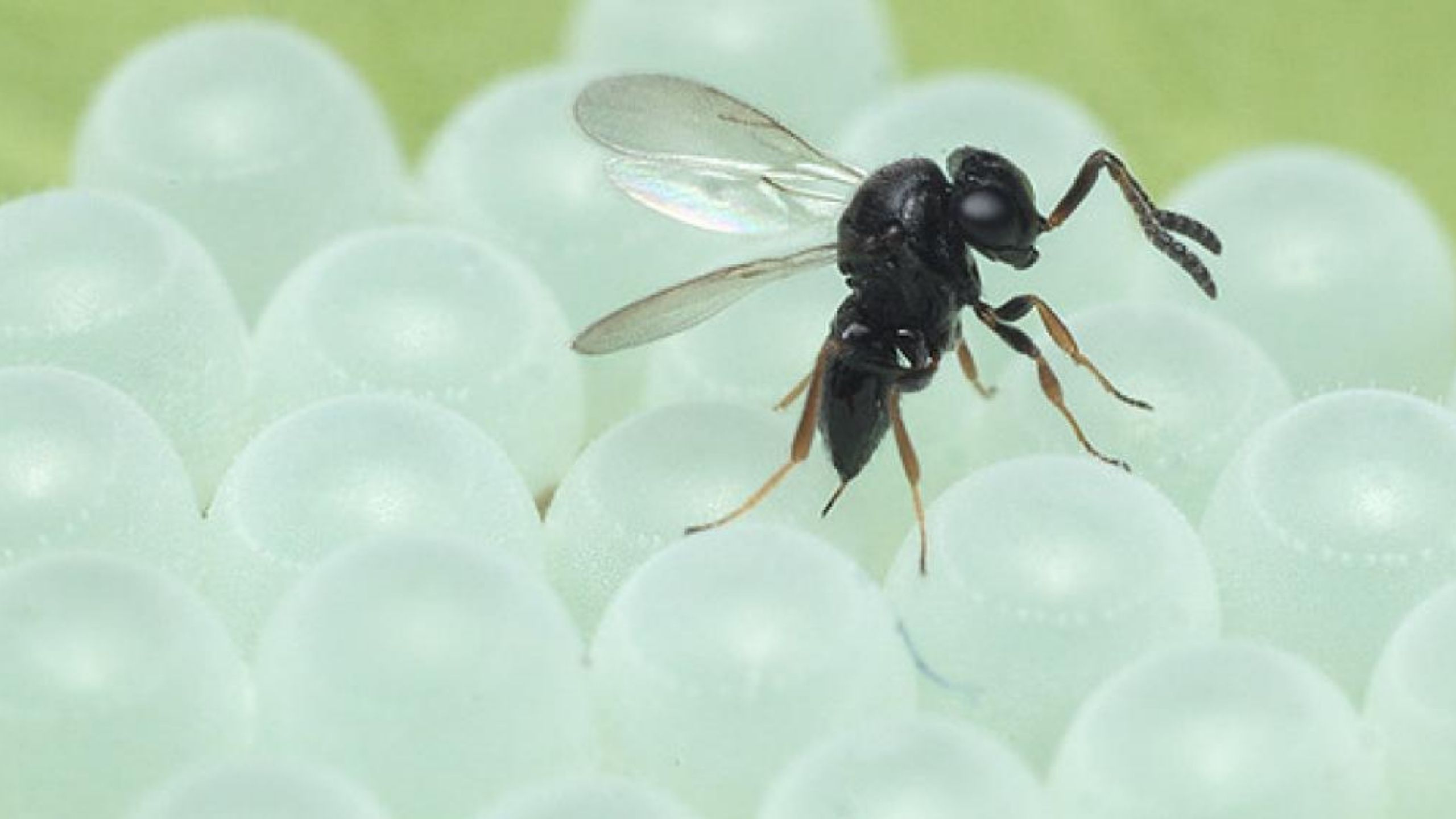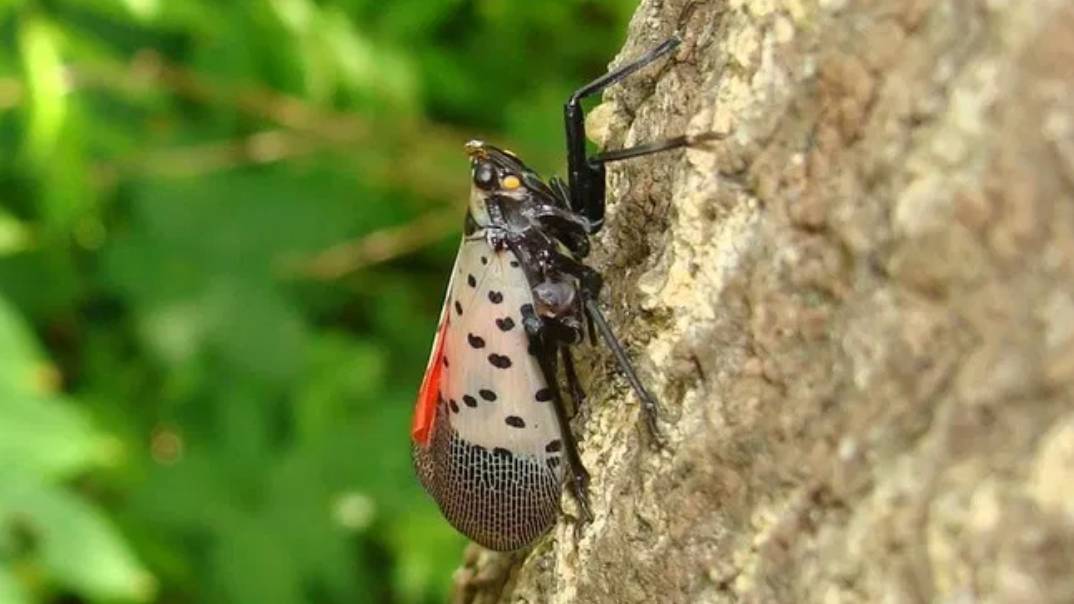Brown Marmorated Stink Bug
[Halyomorpha halys (Stål)]
July 2017
Mark Cody Holthouse, USU Biology (No longer at USU) • Diane Alston, Extension Entomologist (No longer at USU) • Lori Spears, Extension Entomologist (No longer at USU) • Erin Petrizzo, USU Biology
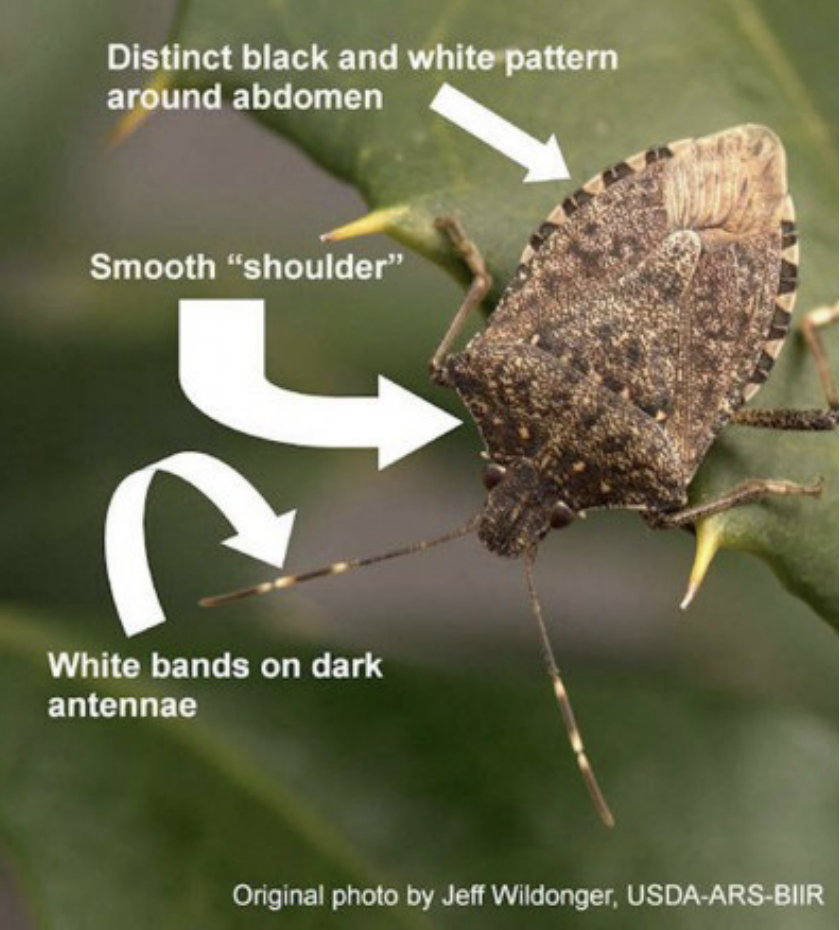
Fig. 1. Adult BSMB and three key identifying characteristics. Image courtesy of JeffWildongerr, USDA-ARSBIIRR.
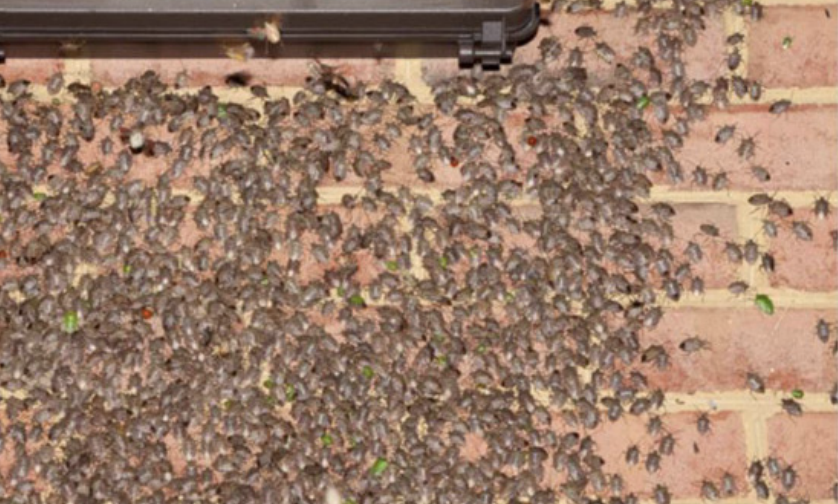 Fig. 2. Large numbers of adult BMSB congregate on the side of a home. Image courtesy of University of Illinois Extension.
Fig. 2. Large numbers of adult BMSB congregate on the side of a home. Image courtesy of University of Illinois Extension.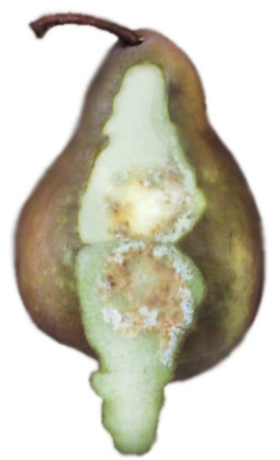
Fig. 3. Internal damage to Bosc pear caused by BMSB feeding. Image courtesy of Yann Wang, stopbmsb.org. Image courtesy of stopbmsb.org.
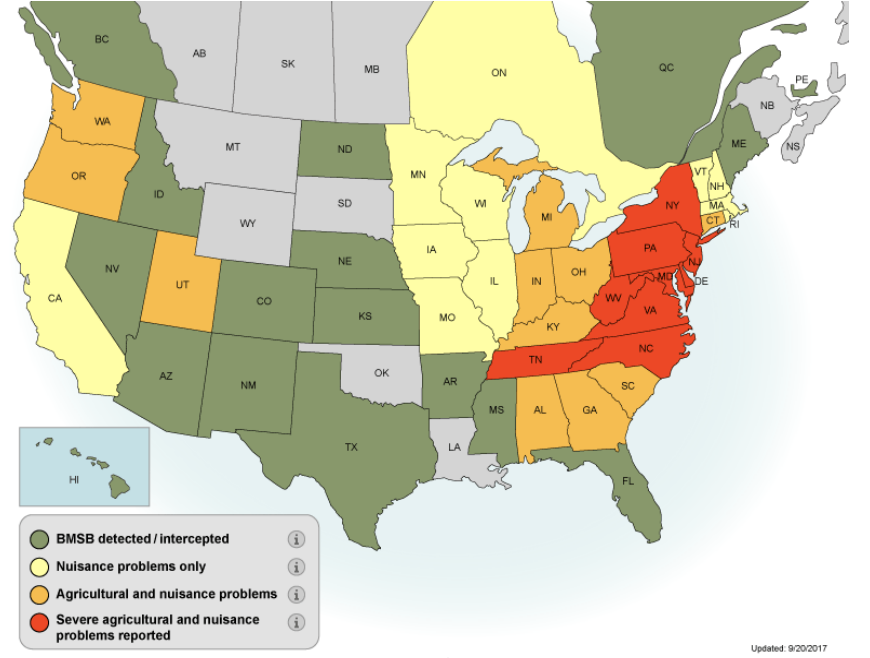
Fig. 4. Current distribution and status of BMSB in the U.S. and Canada (status as of September 20, 2017). For updates, click here.
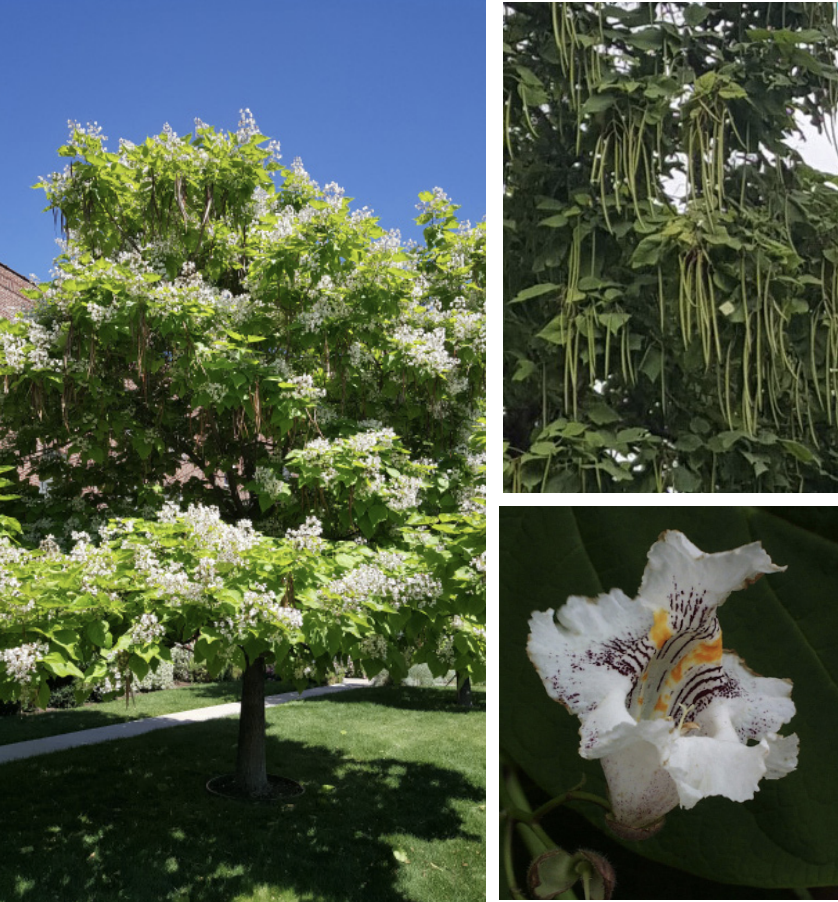
Fig. 5. A mature catalpa tree with large seed pods; a common host for BMSB in Utah.
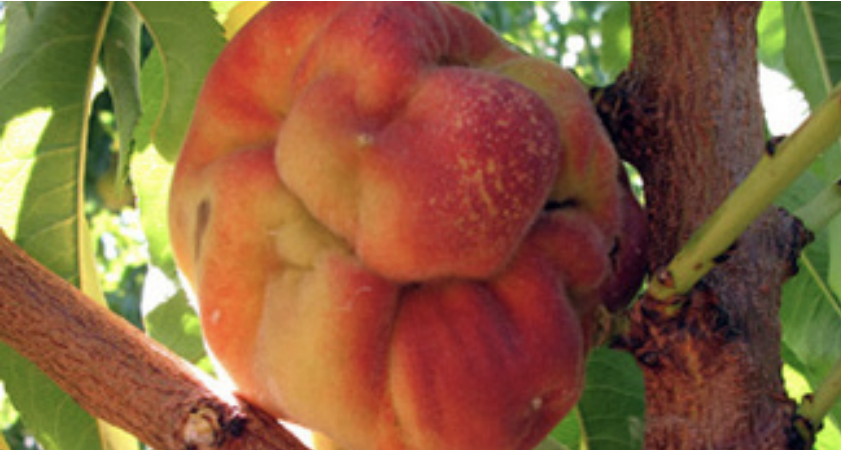
Fig. 6. Distorted peach fruit growth caused by BMSB feeding called catfacing. Image courtesy of Dewey Pest and Wildlife.
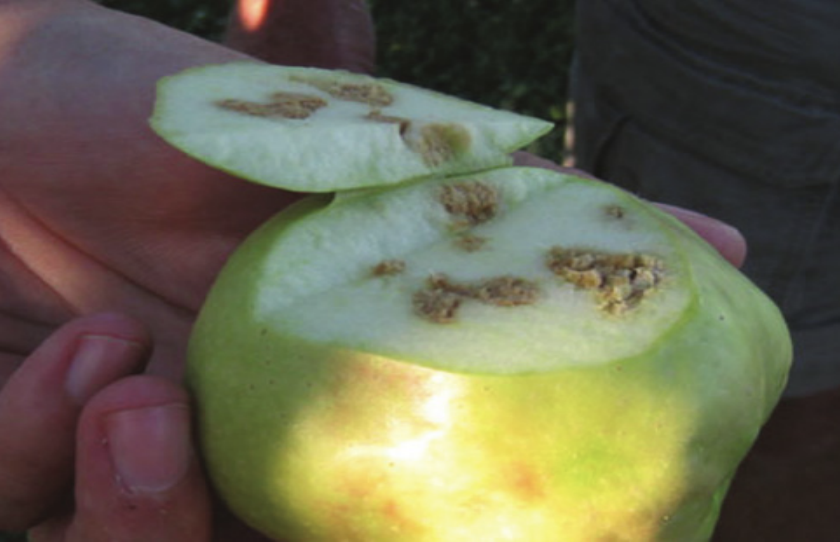
Fig. 7. BMSB feeding damage on ‘Pink Lady’ apple. Note the corky lesions. Image courtesy of Tracy Leskey, USDA.
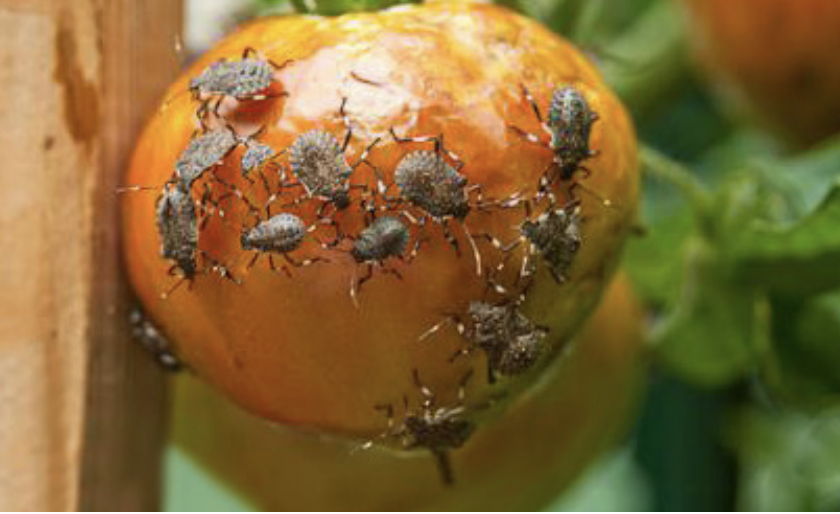
Fig. 8. Discolored and sunken areas on tomato caused by BMSB feeding. Image courtesy of University of Maryland Extension.
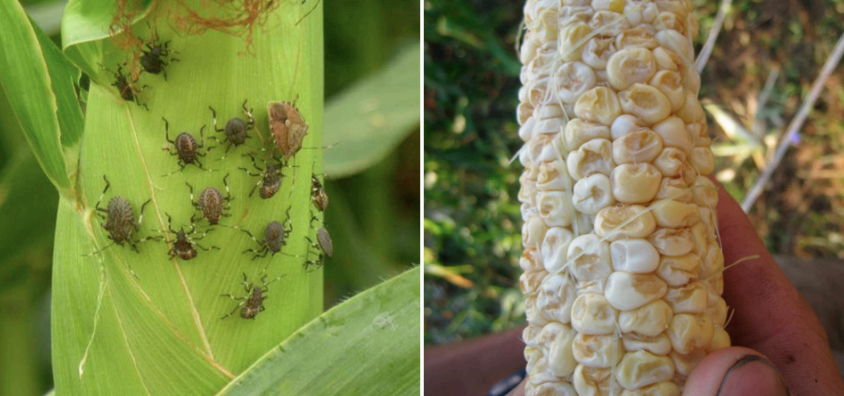
Fig. 9. Sweet corn ear with brown and sunken kernels due to BMSB feeding. Image courtesy of Lincoln University Cooperative Extension.
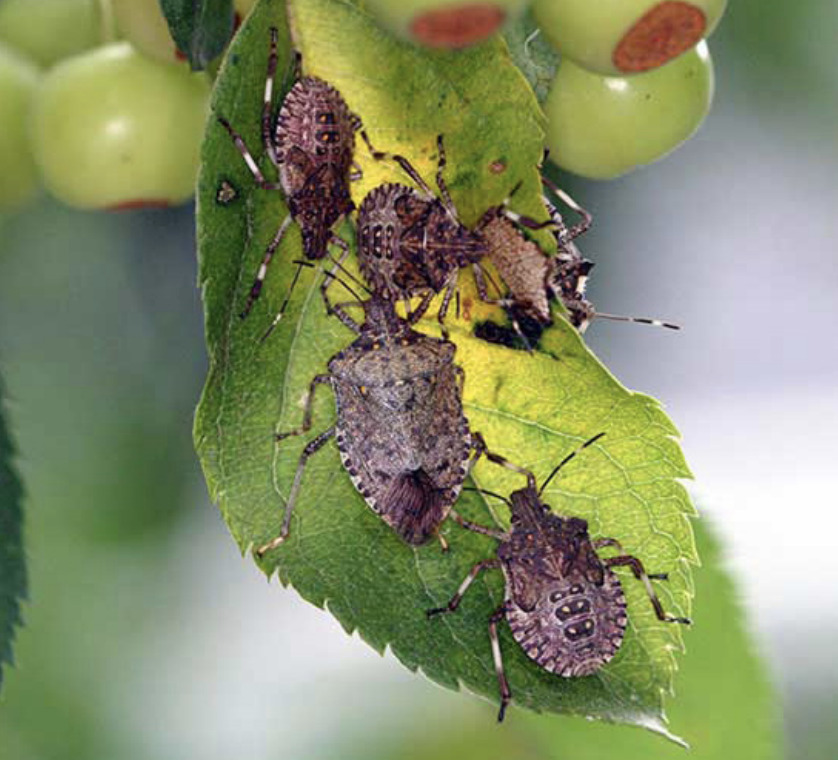
Fig. 10. BMSB adults and nymphs aggregate on a crabapple leaf. Image courtesy of George Hamilton, Rutgers University.

Fig. 11. Adult BMSB aggregate on residential buildings in the fall. Image courtesy of Steve Ruark for The New York Times
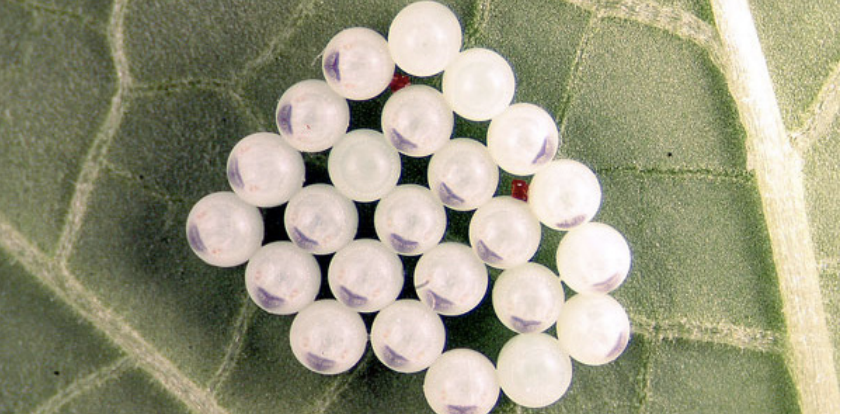
Fig. 12. BMSB egg mass on the underside of a leaf. The triangular shaped egg burster on the head of developing nymphs is visible through the egg shell. Image courtesy of Rutgers New Jersey Agricultural Experiment Station.

Fig. 13. Developmental progression of BMSB, depicting the five nymphal stages (instars) between egg and mature adult. Image courtesy of Mike Lewis, University of California Riverside.
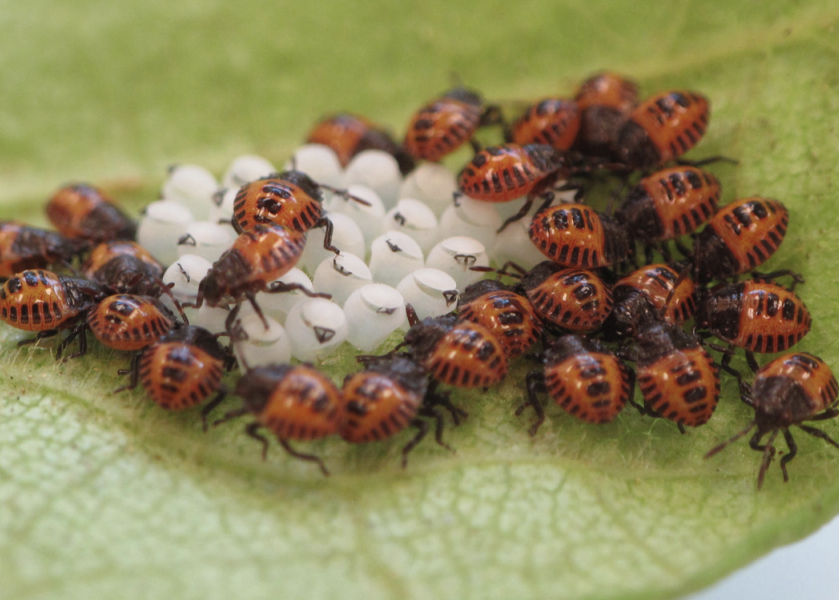
Fig. 14. First instar nymphs remain near egg mass until their first molt.
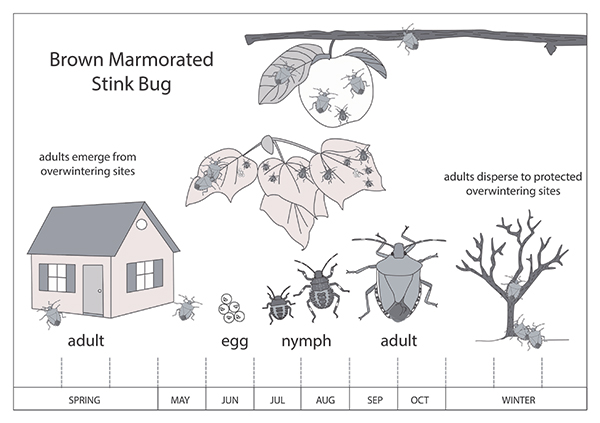
Fig. 15. BMSB life history; there is one generation per year in northern Utah.
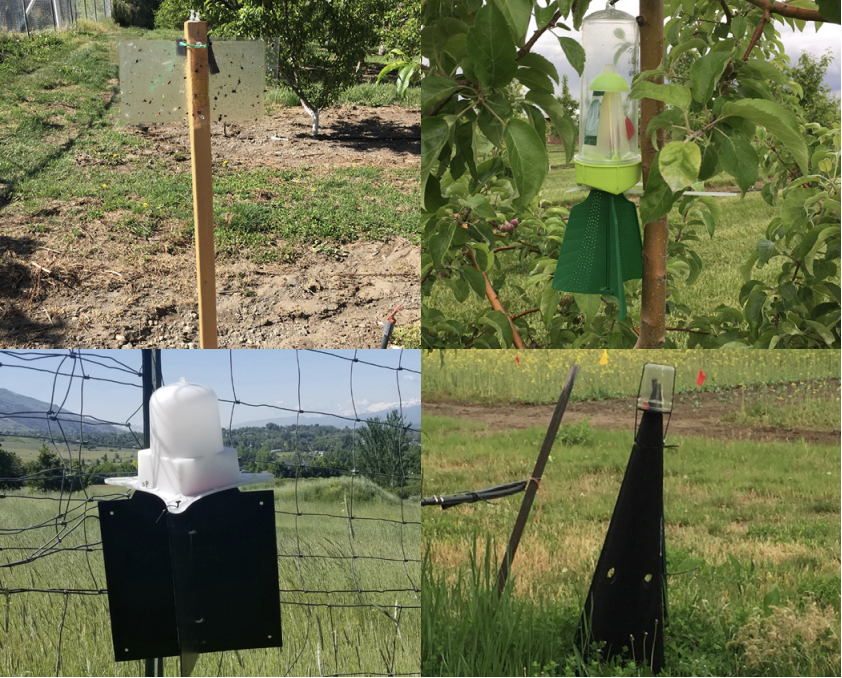
Fig. 16. Different styles of BMSB traps are baited with a two-part pheromone lure to attract adults and nymphs. Clockwise from top left sticky trap, Rescue stink bug trap, Black pyramid trap, Alpha Scents trap.
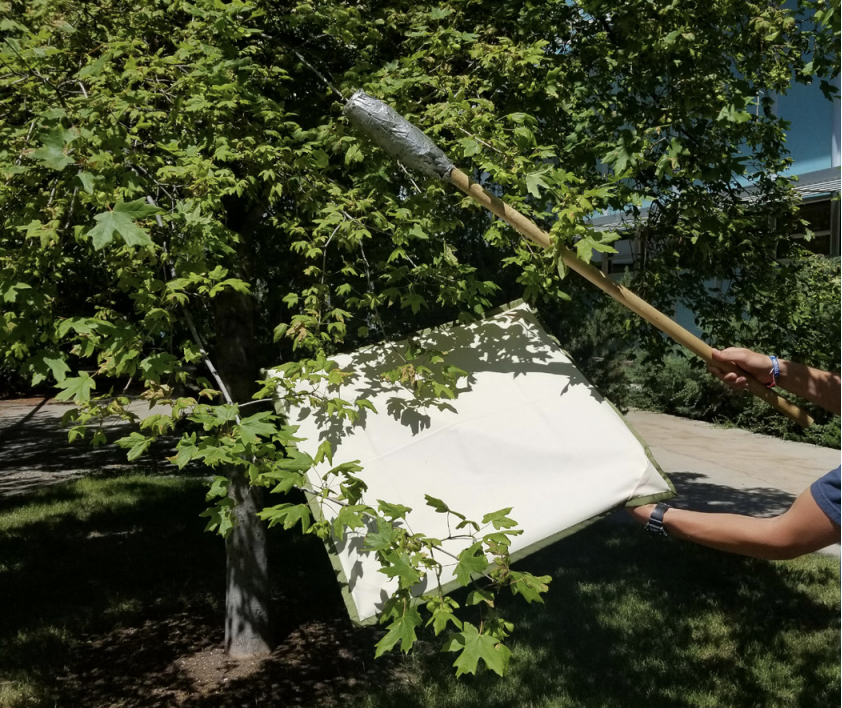
Fig. 17. Beating sheet sampling.

Fig. 18. Photo of the samurai wasp from Asia, Trissolcus japonicus. Image courtesy of Elijah J.Talamass, ARS USDA.
Quick Facts
- Brown marmorated stink bug (BMSB) is an invasive insect pest from eastern Asia.
- In 2012, it was detected for the first time in Utah, in Salt Lake City; as of 2016, it is established and causing nuisance problems in northern Utah.
- BMSB has a broad host range that includes fruit, vegetable, ornamental, and field crop plants; in Utah, it has primarily infested ornamental deciduous trees and shrubs in urban and residential settings.
- In the late fall through spring, BMSB adults will aggregate on homes and buildings; they will seek shelter indoors, under roof eaves, and in attic spaces.
- In addition to nuisance problems, BMSB has caused severe economic plant damage in other regions of the U.S.; it was detected for the first time in commercial crops (peach orchards) in Utah in 2016 and crop damage was reported in 2017.
The brown marmorated stink bug (BMSB, Halyomorpha halys Stål) (Fig. 1) is a recent invasive insect to North America and is native to eastern Asia. Its first North American detection was in Pennsylvania in 1996. In the last decade, it has become a severe urban nuisance (Fig. 2) and agricultural pest (Fig. 3) in the mid-Atlantic and northwestern regions of the U.S. Since January 2017, 43 U.S. states and four Canadian provinces have reported BMSB occurrence (Fig. 4). BMSB was first detected in Utah in 2012; it is now established in four counties (Weber, Davis, Salt Lake, and Utah) and has been detected in two other counties (Cache and Box Elder). As an aggressive generalist herbivore, BMSB infests a broad range of plants and habitats, enabling its rapid spread across many regions of North America, including the Wasatch Front of Utah.
At present, Salt Lake County hosts the bulk of Utah’s BMSB populations. Early establishment has been primarily on ornamental trees (mainly Catalpa speciosa) (Fig. 5) and shrubs. However, in 2016, it was detected in commercial peach orchards, its first detection in agricultural crops in Utah (see section titled “Agricultural Risk”). BMSB is classified as an urban nuisance pest due to its congregation behavior on and within buildings and homes from fall through spring. Damage to peach, apple, popcorn, and other crops was detected for the first time in 2017.
Host Plants
BMSB exploits a wide array of plants, contributing to its success as an invasive insect pest. Within its native range of eastern Asia, it feeds on more than 106 plant types, from trees and shrubs to smaller herbaceous and woody plants (Bergmann et al. 2016). In North America, BMSB has been documented on more than 100 species of plants (Rice et al. 2014); the majority are commodity crop plants and ornamental shrubs and trees.
Currently in Utah, BMSB is found primarily on ornamental trees and shrubs along the Wasatch Front. Some of the documented host plants in Utah are listed in Table 1. The greatest numbers of BMSB have been found on catalpa, making it a sentinel tree for detection and assessment of invasion risk (Fig. 5). Taller trees or shrubs are the likely places BMSB adults will fly to and congregate on. Initial invasion of BMSB is thought to be reliant on human structures for overwintering success and access to ornamental host plants. Initial populations have been along the I-15 corridor, radiating north and south from Salt Lake City.
Table 1. A list of BMSB host plants that occur in Utah.
| Ornamental | |
|---|---|
| Amur maple | Acerginnataa |
| butterfly bush | Buddlejaa spp. |
| catalpa | Catalpa speciosa |
| eastern redbud | Cercis canadensis |
| European beech 'Tricolor' | Fagus sylvatica |
| honeysuckle | Lonicera spp. |
| Japanese maple | Acer palmatum |
| lilac | Syringa spp. |
| Norway maple 'Crimson King' | Acer platanoides |
| purple-leaf plum | Prunus cerasifera |
| purple robe black locust | Robinia pseudoacacia |
| quaking aspen | Populss tremuloides |
| Siberian pea shrub | Caraganaaarborescenss |
| Tree Fruit | |
|---|---|
| apple | Malus domestica |
| chokecherry | Prunus virginiana |
| common plum | Prunus domestica |
| peach | Prunus persica |
Crop Injury and Plant Damage
BMSB has straw-like mouthparts, called a proboscis or stylet, for piercing and sucking plant sap. BMSB can feed on many plant parts such as buds, leaves and stems, but prefers reproductive structures such as fruits and seed pods. Feeding on immature fruits can result in distorted development known as cat facing (Fig. 6). Feeding on mature fruits can cause sunken, corky lesions (Fig. 7) and discolored spots (Fig. 8). BMSB can feed on field and sweet corn through the husk, leaving brown and sunken kernels (Fig. 9). The winery and fruit juice industries are fearful of the impact of BMSB on grapes; injury causes berry collapse and release of noxious volatiles that can taint the wine and juice. BMSB damage has occurred in many other types of plants; for a greater description and photos of BMSB damage, visit www.stopbmsb.org.
General Description
Adult: Life stage associated with dispersal (flight), overwintering, plant damage, and reproduction.
Adult BMSB are cryptically colored with marbled gray, brown, and black camouflage on their back and shoulder areas. The edges of the abdomen exhibit a black and white stripe pattern, antennae have two white bands, and the shoulder (pronotum) edges are smooth (Fig. 1). The underside of the body is light gray to off-white in color. Body shape resembles a five-pointed shield and is approximately 17 mm (5/8 inch) long.
BMSB adults congregate on host plants (Fig. 10) and buildings (Fig. 11). This aggregation behavior is controlled by pheromone cues released by adults. Adults are adept fliers and disperse readily. In late fall, adults move to buildings to seek shelter. These congregation events can be a nuisance to homeowners as the bugs cover surfaces in great numbers, and enter homes through cracks and crevices to exploit the warmer conditions (Fig. 11). BMSB are harmless to humans, but will release a defensive odor when disturbed (some have said it smells like cilantro). By late October, adults enter a winter diapause (similar to hibernation) in which activity slows and feeding ceases. Adults increase activity in the spring (April-May) to begin feeding, mating, and producing egg clusters 2 weeks later (Figs. 12-15). Females produce one egg mass at approximately weekly intervals, and can produce up to 400 eggs in a season with variation by geographical region.
BMSB adults congregate on host plants (Fig. 10) and buildings (Fig. 11). This aggregation behavior is controlled by pheromone cues released by adults. Adults are adept fliers and disperse readily. In late fall, adults move to buildings to seek shelter. These congregation events can be a nuisance to homeowners as the bugs cover surfaces in great numbers, and enter homes through cracks and crevices to exploit the warmer conditions (Fig. 11). BMSB are harmless to humans, but will release a defensive odor when disturbed (some have said it smells like cilantro). By late October, adults enter a winter diapause (similar to hibernation) in which activity slows and feeding ceases. Adults increase activity in the spring (April-May) to begin feeding, mating, and producing egg clusters 2 weeks later (Figs. 12-15). Females produce one egg mass at approximately weekly intervals, and can produce up to 400 eggs in a season with variation by geographical region.
Egg: BMSB eggs are white or light green, and usually found on the underside of leaves in clusters of 20-30 eggs (Fig. 12). Individual eggs are barrel shaped; when nearing maturity, a black triangle, the egg burster, on the first instar’s head can be seen through the egg shell. Eggs require 3-7 days to develop and hatch, depending on temperature.
Nymph: Immature life stage associated with plant damage.
BMSB develops from egg to adult through five juvenile stages called instars (Fig. 13). Each instar sheds its exoskeleton (called molting) to increase its body size. Nymphs are wingless; thus confined to host plants on which they hatch or those within walking distance. Like adults, nymphs feed on plant hosts with their piercingsucking mouthparts. First instar nymphs are red and black, and remain on the egg mass until their first molt (Fig. 14). Second through fifth instars are black and gray with dark bands across the back. Nymph size ranges from 2.4-12 mm (1/10-1/2 inch) in length.
Maintenance
Weeds grow quickly under row covers; therefore, weed barriers may be helpful. Another option is to occasionally pull back covers to hoe and hand-pull weeds. If not using drip irrigation, lift the row covers to allow watering. Deer and other animals can damage row covers, so it may be necessary to set up fences to keep them away from covered plants. Clean row covers may last longer since soil particles can abrade and tear these covers. Row covers can be hosed down with water to clean, but it is important to let them dry completely. Store row covers indoors in plastic bags or containers. Mice may nest in row covers if left in sheds, barns, or garages.
Agricultural Risks
The first signs of agricultural problems with BMSB in the U.S. came in 2008 when a variety of crops (apple, peach, sweet corn, pepper, tomato, soybean) in the mid-Atlanticc region experienced significant damage. BMSB crop damage reached a crisis level in 2010 when $37 million was lost in the apple crop (Herrick 2011). Growers responded to BMSB damage by using broad-spectrum insecticides. In some cases, insecticide use has increased by four-fold (Leskey et al. 2012b). BMSB is a strong flier, has a high reproductive rate, lacks specialized natural enemies in North America, has effective overwintering strategies, feeds on a wide range of plants, and has piercing-sucking mouthparts that allow for partial avoidance of insecticide residues on plants. These factors all contribute to its high risk as an agricultural pest.
BMSB has been detected in fruit and vegetable fields in Utah, Salt Lake, Davis, Weber, and Box Elder counties. In addition, fruit growers have found BMSB at their urban fruit stands and in their freshly picked fruit bins. Damage has been reported on peach, apple, corn, squash, basil, and borage. Peach is just one of many fruits BMSB will attack, both in its Asian home range and in the U.S. Utah producers of stone and pome fruit, along with berry, vegetable and row crops, should be vigilant in scouting for BMSB, and intervening before crop damage occurs.
Monitoring
It is unlikely that BMSB will be eradicated in Utah and other regions of the U.S. due to its widespread distribution, broad host plant range, and high reproductive output. However, effective monitoring efforts should provide early warning for infestations to prevent significant crop loss. Traps using BMSB-specific aggregation pheromone lures can provide effective detection and warning of BMSB populations. A few trap examples are Dead-Inn Pyramid Trap by AgBio Inc., Pherocon® Dual Panel Clear Sticky Trap by Trece Inc., the Rescue® Stink Bug Trap and Trapstik Trap by Sterling International Inc., and the Stink Bug Trap by Alpha Scents Inc. (Fig. 16). Traps should be baited with a lure, and for traps with a collection container, an insecticide strip should be included to kill stink bugs as they enter the trap. Trapping trials are underway in northern Utah to develop monitoring tools and economic thresholds to guide management decision-making. BMSB can also be effectively monitored by visual observation. Use visual inspections during spring emergence (May), peak population spikes (July and August), and when BMSB seek overwintering sites (late September through November). For plant inspections, look up into a tree or shrub canopy against the lighted sky background to spot nymphs and adults on leaves, fruits and seedpods. Egg masses can be conspicuous on the underside of leaves (Fig. 12). Beating sheet sampling (using a beating stick and white catch sheet) can dislodge BMSB from tree or shrub branches for easier viewing on the sheet surface (Fig. 17).
Management
Exclusion
To reduce invasion of BMSB into homes and buildings, seal openings with weather stripping, screens, and caulking. Repair cracks and gaps in walls and foundations. Stink bugs can be excluded from garden and small acreage crops by the application of floating row cover or fine-mesh netting over plants, sticky/adhesive bands on the trunks of trees (Tangle-Trap®), and wrapping fruit in breathable bags. Screens placed on orchard borders and cages are being explored as options to exclude BMSB from fruit and other crops.
Physical Removal
To remove BMSB within a home or workplace, a simple indoor trap can be constructed from a lamp with a bowl of soapy water placed just below the light. BMSB adults will be attracted to the light at night, drop into the soapy water, and drown. For removal of aggregations of BMSB on exterior walls and structures, sweep or vacuum (using waste bag inside) BMSB into a container and freeze before disposal.
Cultural Control
In agricultural settings, trap crops can offer an effective barrier of protection for the cash crop. BMSB primarily enters agricultural fields and orchards from surrounding wooded or residential areas where it overwinters. Planting a non-cash crop barrier around the edge of the crop can congregate invading BMSB and distract them from the cash crop. Farmers in the eastern U.S. have demonstrated effective trap cropping with triticale, sorghum, millet, buckwheat, and sunflower.
Biological Control
Regulating populations of invasive organisms can be challenging due to the “enemy release” effect. When an exotic pest like BMSB invades a new area such as Utah, it lacks the specific predators and parasitoids from its homeland that provide natural population regulation. Restoring natural enemies through introduction or exploiting similar native analogs is a prospect of great interest for BMSB management in the U.S. Surveys will be initiated in northern Utah in 2017 to identify native and introduced predators and parasitoids that may be regulating BMSB populations. Generalist predators found to prey on BMSB in other regions of the U.S. include praying mantid, robber fly, assassin bug, earwig, and spiders. Specific emphasis will be placed on surveying for parasitoid wasps (small wasps that parasitize BMSB eggs), as these provide significant suppression of BMSB in Asia. Trissolcus japonicus, commonly known as the samurai wasp, is an effective parasitoid from Asia that significantly limits BMSB egg survival (Fig. 18). It has been discovered parasitizing BMSB eggs on both the eastern and northwestern coasts of the U.S. The samurai wasp is thought to have come into the U.S. on its own through hitching a ride with BMSB.
The samurai wasp belongs to the Scelionidae family, of which there are several other effective Trissolcus wasps (e.g., T. itoii, T. mitsukuriii, and T. plautiaee of Japan; several other Trissolcus spp. in Korea and China) found to attack BMSB in Asia. In North America (primarily in the East), chalcid wasps (Anastatus ruduviii and Anastatus mirabiliss) have been found to effectively parasitize BMSB eggs in the wild, though mostly in non-agricultural wooded areas. Eggs are not the only BMSB life stage at risk of parasitism; tachinid flies will attack adults. A few tachinid flies have been detected in the U.S., but successful development of the fly larva within BMSB has not been observed.
Insecticides
BMSB adults can be difficult to kill with insecticides due to their strong flight capability (rapid dispersal to avoid treated sites) and tolerance to insecticide residues (avoid contact with residues through their piercingsucking feeding habit). Studies have shown relatively low effectiveness of some chemical classes, and only temporary knock-down of adults. Because of this resiliency, BMSB chemical control has been focused on broad-spectrum insecticides applied at higher label rates. Carbamates IRACC Class 1A*), organophosphates IRACC Class 1B*), pyrethroids (Class 3A*) and neonicotinoids (Class 4A*) have generally shown the greatest efficacy against BMSB. To reduce the likelihood of resistance development in BMSB, it is important to rotate treatments among insecticide classes.
Applications of insecticides to crop borders, where BMSB populations invade first and are typically highest, has been shown to be effective while reducing insecticide use by up to 85% (Leskey et al. 2012a). Insecticide treatments are recommended when BMSB are initially detected, and before populations reach a phase of rapid increase or establishment.
For commercial crops, methomyl (Lannate, other brands), chlorpyrifos (Lorsban), beta-cyfluthrin (Baythroid), bifenthrin (Brigade, many brands), cyfluthrin (Renounce, other brands), deltamethrin (Delta Gold), esfenvalerate (Asana, other brands), fenpropathrinn Danitoll), gammacyhalothrinn (Declare, other brands), lambda-cyhalothrin (Warrior, many brands), zeta-cypermethrin (Mustang Max), acetamiprid (Assail), clothianidinn (Belay), dinotefuran (Scorpion), imidacloprid (Admire Pro, many brands), thiaclopridd (Calypso), and thiamethoxamm (Actara) have shown efficacy against BMSB.
For home fruit and vegetable production, bifenthrin (Ortho Bug BGonn), gamma-cyhalothrin (SpectracideTriazicidee Insect Killer), and acetamiprid (Ortho Flower, Fruit and Vegetable Insect Killer) are the primary conventional insecticides available, while pyrethrins Pyganicc, other brands), azadirachtin/neem Azaa-Direct, other brands), and kaolin clay (Surround) are organically certified options.
For indoor/outdoor treatments made by a commercial applicator (with a valid Utah pesticide applicator license), chlorpyrifos (Vulcan) and bifenthrin (Menace, other brands) are registered in Utah. Homeowner products for treatment of buildings include bifenthrin, gamma-cyhalothrin, cyfluthrin (Bayer Vegetable and Garden Insect Spray), cypermethrin (Ortho Ant and Roach Killer), deltamethrin (Spectracide Stink Bug Killer), permethrin (Monterey Stink Bug Spray), imidacloprid (Ortho Dual-Action Bed Bug Killer) and azadirachtin (organic). For a more inclusive list of chemical insecticide options for BMSB, consult the Invasive Fruit Pest Guide for Utah.
*Insecticide Resistance Action Committee Mode of Action Classification
Have you Seen BMSB?
Finding BMSB in your home or garden can be unsettling, but there are precautionary measures to help defend yourself against this invasive pest.
Reports of possible BMSB sightings are valuable to protect all Utah communities and property owners. The USU Cooperative Extension created a Report an Invasive Pest in Utah website to report a finding, upload a photo, and find contact information for submitting a specimen for identification. Establishing whether or not you have found BMSB or a look-alike is a great first step.
For more information on brown marmorated stink bug, refer to:
- Invasive Fruit Pest Guide for Utah
- First Detector Guide to Invasive Insects
- Invasive Insect Look-Alikes Fact Sheet
- USU Extension BMSB Rack Card
- Stopbmsb.org
References and Further Reading
- Bergmann, E.J.,Venugopall, P.D., Martinson, H.M.,Rauppp, M.J., and Shrewsbury, P.M. 2016. Host plant use by the invasive Halyomorpha halys (Stål) on woody ornamental trees and shrubs.PLoSS ONE 11(2): e0149975.
- Herrick, C. 2011. Brown marmorated stink bug causes $37 million in losses to mid-Atlantic apple growers. In Growing Produce, American/Western Fruit Grower, 14 Apr. 2011. Web. 14 Oct. 2016.
- Hoebekee, E.R., and Carter, M.E. 2003. Halyomorpha halys (Stål) (Heteroptera: Pentatomidae): a polyphagous plant pest from Asia newly detected in North America. Proceedings of the Entomological Society of Washington 105: 225– 237.
- Leskey, T.C., Lee, D.H., and Short, B.R. 2012a. Impact of insecticides on the invasive Halyomorpha halys: analysis of insecticide lethality. Journal of Economic Entomology 105(5): 1726-1735.
- Leskey, T.C., Short, B.D., Butler, B.R., and Wright, S.E. 2012b. Impact of the invasive brown marmorated stink bug, Halyomorpha halys (Stål), in mid-Atlantic tree fruit orchards in the United States: case studies of commercial management. Psyche: A Journal of Entomology, 2012, 1-14.
- Rice, K.B., Bergh, C.J., Bergmann, E.J., Biddinger, D.J.,Dieckhofff, C.,Divelyy, G., Fraser, H., Gariepy, T., Hamilton, G., Haye, T., Herbert, A.,Hoelmerr, K., Hooks, C.R., Jones, A., Krawczyk, G., Kuhar, T., Martinson, H., Mitchell, W., Nielsen, A. L.,Pfeifferr, D.G.,Rauppp, M.J., Rodriguez-Saona, C., Shearer, P., Shrewsbury, P.,Venugopall, P.D., Whalen, J., Wiman, N.G. Leskey, T.C., andTookerr, J.F. 2014. Biology, ecology, and management of brown marmorated stink bug (Hemiptera: Pentatomidae). Journal of Integrated Pest Management 5 (3). A1-A13.
Related Research



